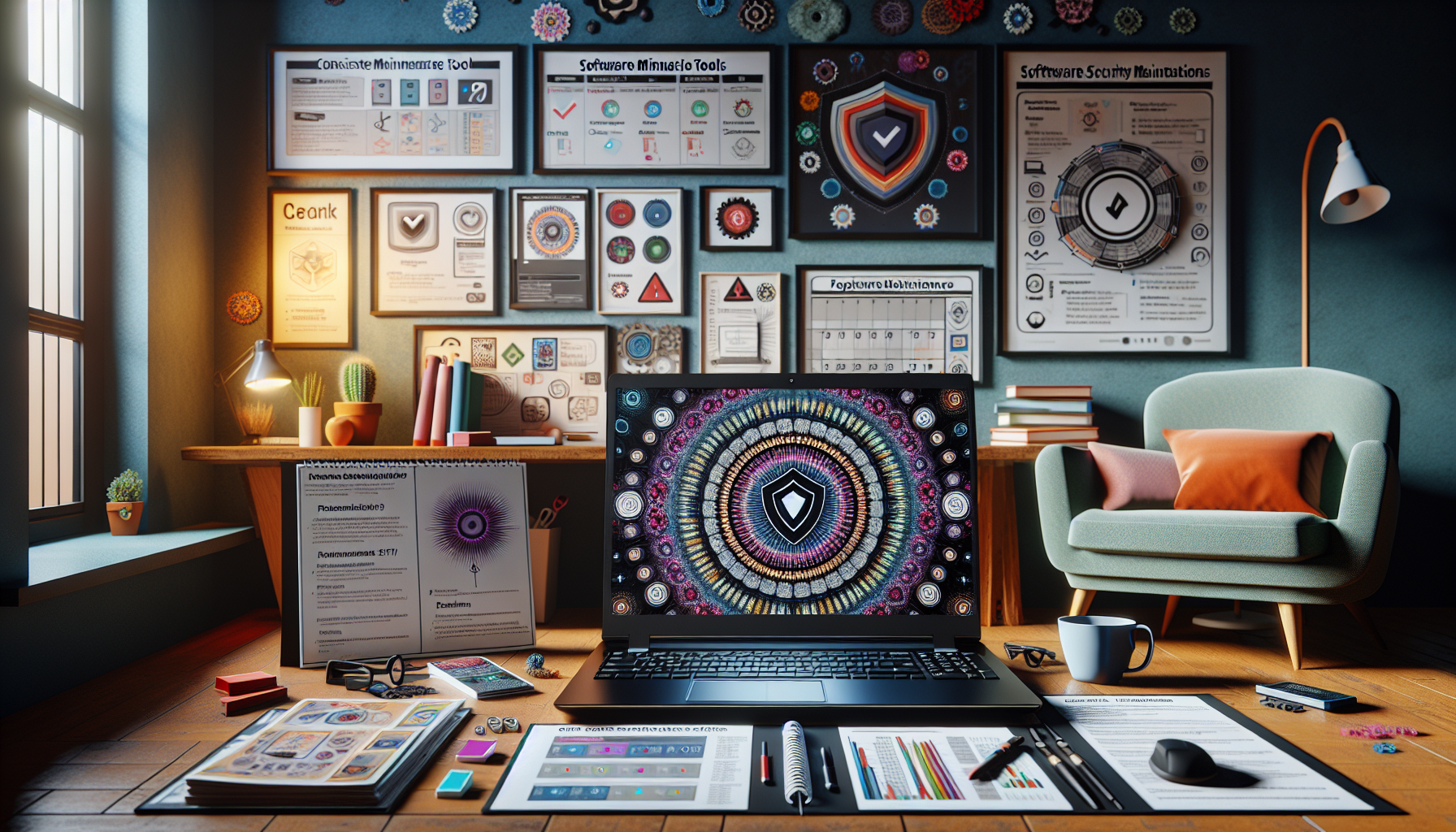Adobe Photoshop stands as the cornerstone of digital creativity, offering a comprehensive suite of tools for photo editing, graphic design, and digital art. This course is designed to guide beginners through the intricacies of navigating Adobe Photoshop, from mastering the basics of the interface to unlocking the potential of layers and diving into essential photo editing techniques. Whether you’re looking to enhance photos, create digital artwork, or design graphic elements, this course lays the foundation for you to explore your creative vision and bring your ideas to life.
Lesson 1

Getting to Know Your Way Around Adobe Photoshop: A Beginner’s Guide
Adobe Photoshop is a powerful tool that offers endless possibilities for creative minds. Whether you’re touching up photos, creating digital artwork, or designing graphics, understanding the basics of Photoshop is a crucial first step. This how-to guide will take you through navigating the Photoshop interface, a key aspect for beginners to master. We aim to infuse this tutorial with helpful, reliable, and user-first content that makes your journey into Adobe Photoshop both enjoyable and enriching.
Understanding the Photoshop Interface
The first time you open Adobe Photoshop, the interface might seem daunting. But don’t worry, we’re here to break it down for you. The Photoshop interface can be your best friend once you get to know its components and how they can aid in your creative process.
- Workspace: The area where you’ll spend most of your time, comprising various panels like Layers, Adjustments, and Tools.
- Tools Panel: Located on the left side, this panel houses the tools you need for creating and editing your projects.
- Options Bar: Found at the top, it changes depending on the selected tool, offering different settings for customization.
- Panels: Numerous panels give you control over layers, color, adjustments, and more. They can be found on the right side and customized to fit your workflow.
Navigating the Workspace
Getting comfortable with the Adobe Photoshop workspace is vital. The more efficiently you navigate it, the quicker and more creatively you can work.
- Experiment with different workspaces by going to Window > Workspace. Adobe Photoshop offers several preset workspaces optimized for different tasks, such as Painting, Photography, and Graphic Design.
- Customize your own workspace by dragging panels to desired locations or by grouping them together. This can significantly speed up your workflow by keeping your most-used tools accessible.
Introduction to Basic Tools and Their Uses
Adobe Photoshop’s array of tools might seem overwhelming at first, but focusing on a few essential tools can make a big difference.
- Move Tool: This tool allows you to move selected layers or items within your project.
- Brush Tool: Perfect for digital painting or retouching, the Brush Tool lets you paint in your chosen color.
- Clone Stamp: Use this tool to duplicate parts of your image. It’s ideal for removing blemishes or duplicating elements.
- Crop Tool: Adjust the framing of your project by cropping it. You can also use this tool to straighten photos.
Adobe Photoshop is a versatile software that, once mastered, can unleash your creative potential. Remember, the key to becoming proficient in Photoshop is practice and experimentation. Don’t hesitate to try new tools and explore different panels to see how they can benefit your projects. Adobe Photoshop is not just about editing photos; it’s a gateway to unlimited creative expression.
Lesson 2

Mastering Layers in Adobe Photoshop: A Beginner’s Guide
Adobe Photoshop’s layers are like the magical recipe for creativity in the digital realm. They allow artists and designers to manipulate, organize, and create images with incredible detail and complexity. If you’re diving into Adobe Photoshop, understanding how to manipulate these layers is crucial. Let’s explore the realm of layers in Adobe Photoshop and unlock the potential for your creative projects.
Understanding What Layers Are
In Adobe Photoshop, think of layers as transparent sheets stacked on one another where you can paint or insert images. Each layer can be edited separately, allowing for non-destructive editing. This means you can tweak, adjust, or completely change elements of your image without altering the original picture.
Creating and Managing Layers
To start your journey with layers, navigate to the Layers Panel. If it’s not visible, you can find it by going to Window > Layers. Creating a new layer is as simple as clicking the New Layer icon at the bottom of the panel. Managing your layers effectively entails renaming them for clarity, reorganizing them by dragging and dropping to the desired order, and grouping related layers to maintain a clean workspace.
- Rename by double-clicking the layer’s name
- Drag to reposition
- Use the folder icon to group layers
Exploring Layer Types
Adobe Photoshop offers various layer types, each serving a unique purpose. Understanding these can enhance your workflow.
- Text Layers: Create and edit textual content.
- Adjustment Layers: Apply color and tonal adjustments without permanently altering your image.
- Shape Layers: Vector-based shapes that can be resized without losing quality.
Experimenting with Basic Layer Masking Techniques
Layer masks are a powerful feature in Adobe Photoshop, allowing you to hide or reveal parts of the layer without deleting any pixels. Adding a layer mask to a layer and using a brush to paint in black or white can reveal or hide portions of the layer. This technique is essential for blending images or making selective adjustments.
By now, you’ve uncovered the foundational concepts of working with layers in Adobe Photoshop. Layers are the building blocks of your Photoshop projects, and mastering them means unlocking limitless creative potential. So, dive in, experiment, and let layers unveil a whole new world of digital art possibilities. Remember, every great Photoshop masterpiece began with a simple layer.
Lesson 3

Essential Photo Editing Techniques in Adobe Photoshop
Welcome to the world of photo editing with Adobe Photoshop! Whether you’re aiming to enhance your photos for social media or prepare images for professional projects, Adobe Photoshop provides a comprehensive toolkit for all your editing needs. In this guide, we’ll delve into the basics of photo editing, helping beginners make the most out of their images. Remember, Adobe Photoshop is a powerhouse of features waiting to be explored. Let’s get started!
Cropping and Resizing Images
One of the first steps in photo editing is often to crop and resize the image. Cropping allows you to remove unwanted parts and focus on the subject, while resizing is essential for ensuring your image fits specific dimensions for print or web. Both these actions can dramatically improve the composition and purpose of your photos.
Adjusting Brightness, Contrast, and Color Balance
A key aspect of photo editing in Adobe Photoshop is adjusting the brightness, contrast, and color balance. These adjustments can help correct lighting issues, enhance colors, and make your photos pop. Remember, subtle changes can often make a big difference. Experiment with the sliders and find the perfect balance for your image.
Removing Blemishes with Clone Stamp and Healing Brush Tools
No photo is perfect, but Adobe Photoshop comes close to making it so. The Clone Stamp and Healing Brush tools are perfect for removing any unwanted blemishes, spots, or objects. With these tools, you can sample from an unblemished area and paint over the imperfection, seamlessly blending it with the surrounding pixels.
Introduction to Filters and Effects
Adobe Photoshop’s filters and effects can add that final touch to make your images truly stand out. From artistic effects to texture overlays, the possibilities are endless. While it’s easy to get carried away, remember that sometimes, less is more. Filters can enhance your image, but the original quality of your photo should always be the star of the show.
Photo editing in Adobe Photoshop opens up a world of creative possibilities. From basic adjustments to sophisticated manipulations, the tools at your disposal are incredibly powerful. As you become more familiar with Photoshop’s features, you’ll find that editing photos becomes not just a task, but a form of artistic expression. Start experimenting and let your creativity flow.
Adobe Photoshop empowers users to bring their creative visions to life, serving as a vital tool in the world of digital design and artistry. Throughout this course, we have explored navigating the Photoshop interface, the transformative power of layers, and the essential techniques for photo editing. As you continue on your creative journey, remember that practice and experimentation are key to mastering Adobe Photoshop. To test the knowledge you’ve acquired, we encourage you to take the 10-question quiz below. This quiz is designed to reinforce your understanding and ensure you’re ready to harness the full potential of Adobe Photoshop in your future projects.
Test Your Knowledge With this short Quiz
Click here to copy your score to share on facebook!







